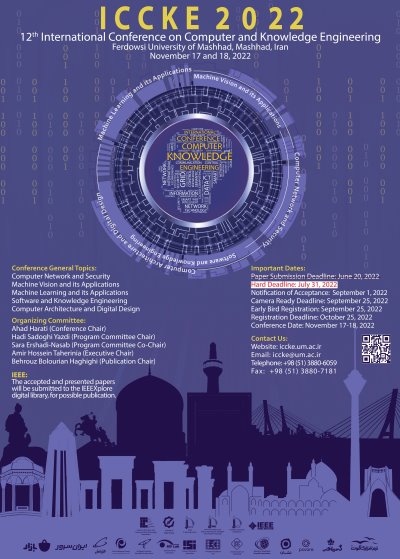0% Complete

Authors :
Keywords :
Abstract :
List of archived papers
Sahar Salimpour Kasebi - Hadi Seyedarabi - Javad Musevi Niya
Kamyar Nasiri - Kamaledin Ghiasi-Shirazi
Maliheh Araghchi - Nazbanoo Farzaneh
Reza Shami Tanha - Mohsen Hooshmand - Mohsen Afsharchi
Mehdi Amininasab - Ahmad Patooghy - Mahdi Fazeli
Samad Azimi Abriz - Majid Meghdadi
Hamideh Rafiee - Ahmad Ali Abin - Seyed Soroush Majd
Sina BaniasadAzad - Seyed Mohammadreza Mousavi mirkolaei
Fatemeh Salmani - Hamed Vahdat-Nejad - Hamideh Hajiabadi
Dorna Nourbakhsh Sabet - Mohammad Reza Zarifi - Javad Khoramdel - Yasamin Borhani - Esmaeil Najafi




